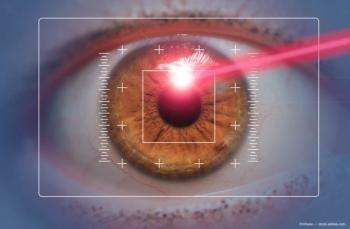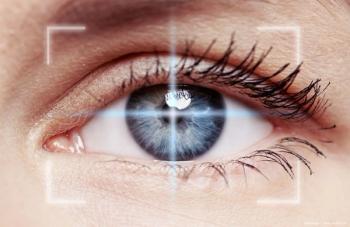
Flap shape makes difference
There is more to femtosecond laser LASIK than the laser frequency alone. Flap shape also makes a difference. A recent trial confirmed that elliptical flaps offer the predicted surgical advantages over circular flaps with no change in patient satisfaction or visual performance scores, said Louis Probst, MD,
San Francisco-There is more to femtosecond laser LASIK than the laser frequency alone. Flap shape also makes a difference. A recent trial confirmed that elliptical flaps offer the predicted surgical advantages over circular flaps with no change in patient satisfaction or visual performance scores.
“Elliptical flaps offer some advantages because of the precise alignment they allow,” said Louis Probst, MD, national medical director at TLC Chicago. “An elliptical flag can only fit into place one way because of its shape. A circular flap can fit in any configuration.”
Elliptical flags are also better suited to the anatomy of myopia. Nearly all patients with myopia, 99%, have a horizontal aspect to their myopia that is better suited to an elliptical flap, Dr. Probst said. An elliptical flap also creates a more robust hinge. Dr. Probst advised using superior hinges for a deeper pocket that allows for better gas escape and greater stability.
What has not been clear is how well elliptical flaps perform in the real world. Dr. Probst presented the results of a randomized, prospective trial that compared round flaps and elliptical flaps using a femtosecond laser (iFS, Abbott Medical Optics [AMO]). Refractive correction for both flap groups was performed using a laser vision correction treatment (CustomVue, AMO)
Most patients had better than 20/20 vision preoperatively, he noted. Subjective visual parameters increased following surgery for both the circular and the elliptical flag groups. Three months after surgery, between 30% and 40% of both groups had 20/12 or better vision.
“20/20 can’t be our standard any longer, because most of our patients better than that preoperatively,” he said. “We are making vision better, which is pretty exciting.”
Higher-order aberrations increased similarly in both groups, he said, and patient satisfaction scores were nearly identical before and after surgery in both groups. Patient satisfaction was extremely high for both groups and did not show any differences based in the type of flap used.
The only significant difference was the lid margin to light reflex distance. The average MRD scores suggest that the superior hinge is the more effective placement.
“Both configurations offer very good results, but I believe the elliptical flag offers some significant surgical advantages,” Dr. Probst concluded.
For more articles in this issue of Ophthalmology Times Conference Brief,
Newsletter
Don’t miss out—get Ophthalmology Times updates on the latest clinical advancements and expert interviews, straight to your inbox.
















































.png)


